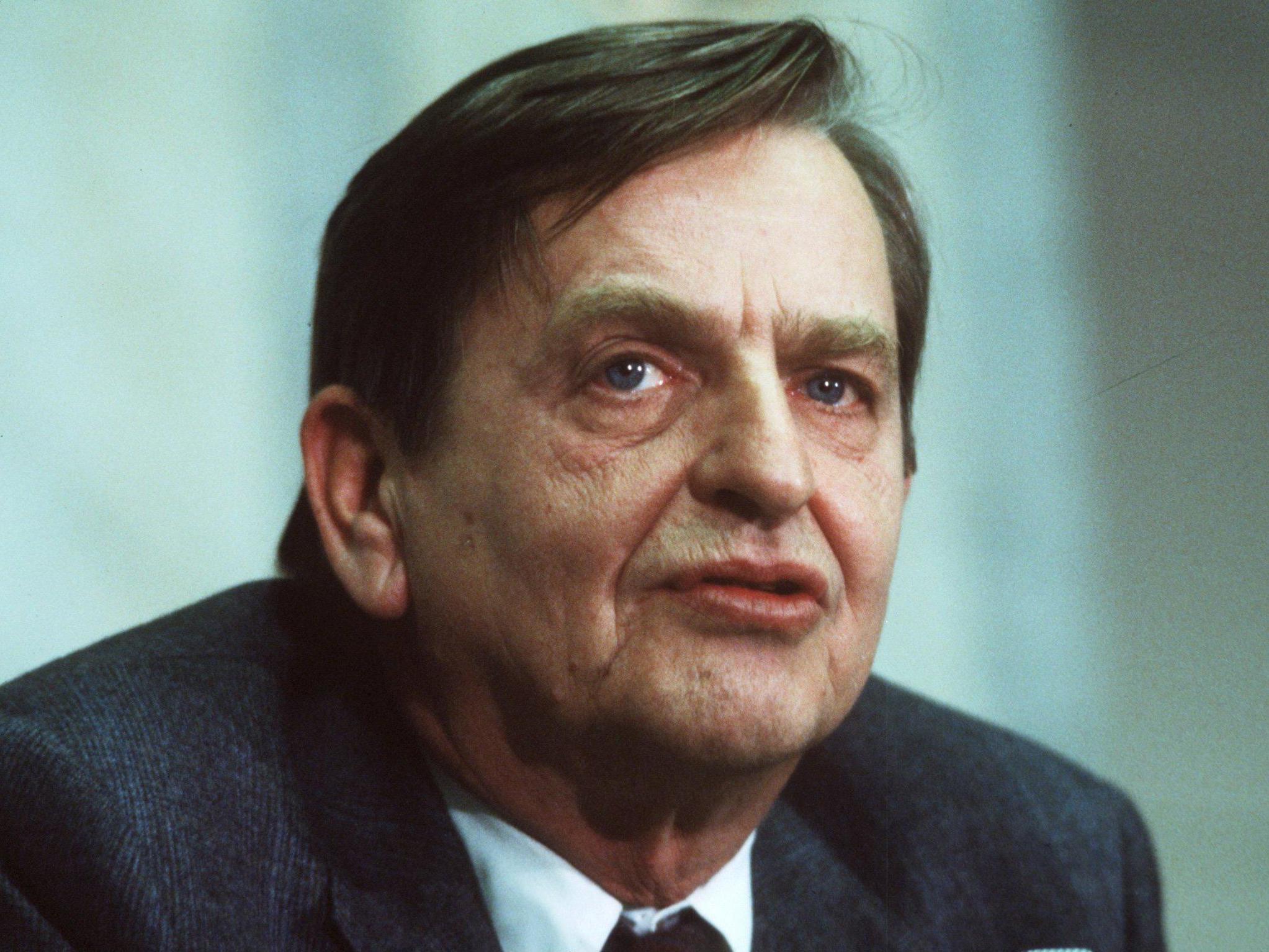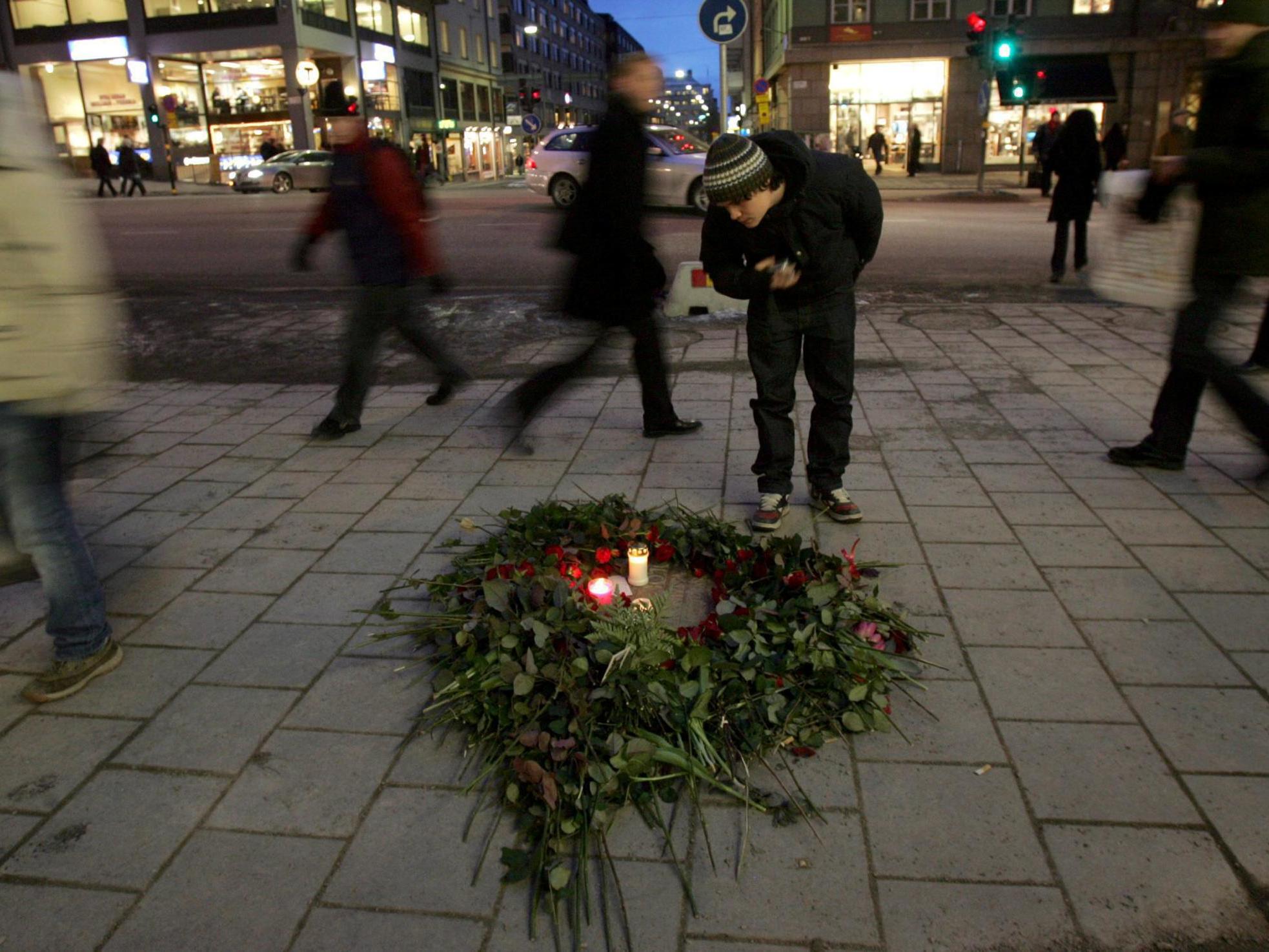Olof Palme: Sweden drops 34-year investigation into murder of prime minister
Main suspect died in 2000

Your support helps us to tell the story
From reproductive rights to climate change to Big Tech, The Independent is on the ground when the story is developing. Whether it's investigating the financials of Elon Musk's pro-Trump PAC or producing our latest documentary, 'The A Word', which shines a light on the American women fighting for reproductive rights, we know how important it is to parse out the facts from the messaging.
At such a critical moment in US history, we need reporters on the ground. Your donation allows us to keep sending journalists to speak to both sides of the story.
The Independent is trusted by Americans across the entire political spectrum. And unlike many other quality news outlets, we choose not to lock Americans out of our reporting and analysis with paywalls. We believe quality journalism should be available to everyone, paid for by those who can afford it.
Your support makes all the difference.The answer to the mystery of who shot Swedish prime minister Olof Palme is unlikely to be answered definitively after a 34-year investigation into the case was dropped.
The case’s chief prosecutor, Krister Petersson, said the case was being closed because the main suspect Stig Engstrom had died in 2000.
Palme was the Social Democrat prime minister between 1969 and 1976 and between 1982 and 1986. Some celebrate him as the architect of modern Sweden, though conservatives hated his anti-colonial views and criticism of the United States.
He was killed in central Stockholm in 1986 after he visited the cinema with his wife, Lisbet Palme, and son.
Mr Petersson said suspect Engstrom, also known as “Skandia-man” for working in the nearby Skandia insurance company, had a strong dislike of Palme and his policies.
He was one of the first at the murder scene and was briefly considered a possible suspect.
“Since he has died, I cannot indict him,” Mr Petersson told a news conference.
Several other witnesses gave descriptions of the fleeing killer that matched Engstrom, while others said he wasn’t even at the scene.
Engstrom himself claimed to have been present from the beginning, spoke to Ms Palme and police, and attempted to resuscitate the victim.
Soon after the murder, Engstrom appeared in Swedish media and developed an increasingly detailed story of his involvement in the events and criticised the police.
He claimed those witnesses who had described the killer had in fact been describing him, running to catch up with police officers in pursuit of the assassin.
The police then labelled Engstrom as a unreliable and inconsistent witness and classified him as a person of no interest.
Engstrom’s former wife told the daily Aftonbladet in 2018 she was convinced he was not the killer.
Palme’s wife was injured in the attack and later identified the shooter as Christer Pettersson, an alcoholic and drug addict, who was convicted of Palme’s murder.
The sentence was later overturned after police failed to produce any technical evidence against him, leaving the murder an unsolved mystery. Pettersson died in 2004.

Palme’s murder, at the age of 59, led to Sweden‘s largest-ever manhunt and a swathe of conspiracy theories, ranging from the CIA and Kurdish separatists to the South African security services – none of which has been proven true.
The police were widely accused of bungling the initial investigation.
Jan Stocklassa, author of The Man Who Played with Fire: Stieg Larsson’s Lost Files and the Hunt for an Assassin, told Sky News the closure of the case was a “huge disappointment”.
Mr Stocklassa’s book follows the work of bestselling Swedish crime author and journalist Stieg Larsson, who was working on a theory connected to the South African security apparatus until his death in 2004.
He said the belief Engstrom carried out the murder was “not at all credible” and labelled him “an attention seeker that has changed his version of the event many times”.
Mr Stocklassa said he remained “completely convinced” the murder was linked to apartheid South Africa and far-right groups in Sweden.
The failure to solve the case has long caused unease in a nation that prides itself on its openness and tolerance.
Join our commenting forum
Join thought-provoking conversations, follow other Independent readers and see their replies
0Comments